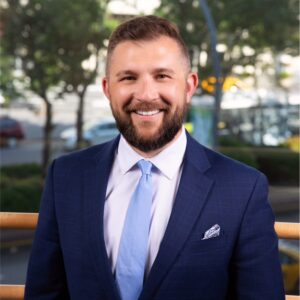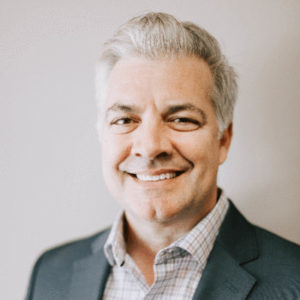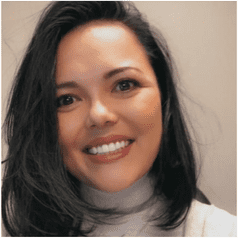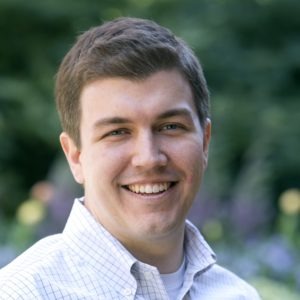Cyber Cafe bridges cultures, technology
The prevailing idea about adult learning is that adults will learn what is immediately relevant to them and/or helps them solve problems.1
At St. Barnabas Senior Services (SBSS), making computers immediately relevant to its clients poses some special challenges. SBBS serves Chinatown, Koreatown, Filipinotown, and a very large Hispanic community in central Los Angeles—the most densely populated, ethnically diverse, low-income neighborhood in the city. SBSS’ clients roughly match the demographic profile of its 15-square-mile service area, at 37% Chinese, 23% Korean, 20% Hispanic, 15% Caucasian, and 5% African American. Typically, SBSS clients are immigrants in their mid-70s with a high school education or less, limited English skills, living alone, and depending on Social Security of $700 to $800 monthly, with few relatives or friends to provide assistance. What could be found in a computer that would be immediately relevant to one, much less a significant portion of this group? The answer lay in the demographic profile—immigrants in their 70s with limited English, and in observing their rituals. This is a generation of newspaper readers, accustomed to reading the news every day in their own language. They are dependent on news in their own language to understand what is going on around them or in their former homes.
Editor’s note: The Cyber Café at St. Barnabas Senior Services in Los Angeles, has won the 2008 American Society on Aging MetLife Foundation MindAlert Award. The MindAlert Award is a national project designed to recognize outstanding programs developed to improve mental stimulation and creative outlets later in life. The award is given to organizations that have demonstrated high-quality, innovative programs, based on scientific evidence and that the programs offered by these organizations enhance functioning and quality of life or prevent functional decline in older adults. |
Different question
So the student asked the seniors a different question: “Would you like to read today’s newspaper from your hometown—free of charge?” The response was surprise, curiosity, and invariably, “yes!” When the answer was “yes!” the student led the senior to a computer that was hooked up to digital subscriber line (DSL) and programmed in several languages. She sat the senior in front of the screen, located a newspaper in his language from his hometown or region, adjusted the size of the image to be sure the senior could see it clearly, and showed the senior how to use the page up and page down buttons. Then she stepped back and just waited in the background in case the senior had questions or problems. Soon, the five computers SBSS installed had a row of newspaper readers for several hours each day. And soon, the newspaper readers started asking what else a computer could do. The student showed them games, music, videos, e-mail, and Web sites that translated, and much more. Then she asked the seniors what they would like to do.
Honoring another principle of adult learning, she put them in charge of their own learning, and her introduction to computer use had given the seniors enough information to form an opinion about what might be relevant to them. Their introduction to computers came without prerequisites—no requirement to learn keyboarding first, or how a computer works, or what the Internet is, or even how to log on and log off. But now, if their interest was piqued to use the computers, mastery of the keyboard or the mouse was understandable, and they were motivated to acquire these skills. As interest built, SBSS recruited students from local colleges who spoke the seniors’ native language. The volunteers were told that all instruction would be one on one, using a methodology SBSS called “Teacher Follows the Student”―the tutors would ask the seniors what they would like to know about, and follow that lead. Each tutor was asked to volunteer one hour per week to help one senior for 12 or more weeks, but could spend more time with the senior if the tutor and senior wished.
SBSS intentionally avoided a set curriculum, preferring for the learning to evolve naturally, based on the seniors’ interests. As tutors worked with their students, they would make notes, write simple instructions, or download information to help their students. Sometimes the download required translation by the volunteers or staff. Over time, SBSS built a catalog of worksheets in various languages that tutors shared or students used for self teaching. In short order, 20 seniors, and then 40 seniors were learning the basics of computing. New friendships were forming based on their shared interest in computers. Two other unanticipated social factors evolved:
- Seniors seemed to be motivated by the regular, undivided attention of their tutors—perhaps as much or more than they were motivated by a desire to learn computers. (For a detailed discussion on this phenomenon, see Dickinson and Gregor, August 2006.2)
- In entrance and exit interviews with volunteer tutors, a shift in their attitudes about seniors and aging was noted. During the entrance interviews, the tutors often said they had little or no contact with seniors, and they expressed ambivalence about working with seniors, based on negative stereotypes. (The entrance interviews were particularly disconcerting because many of these tutors were studying medicine, social work, and gerontology.) On the exit interviews, the opinions of the tutors were usually revised to a positive attitude about seniors in which the tutors described the seniors as intelligent and interesting people that they enjoyed spending time with.
The rationale for the Cyber Café model is that computer labs, by design, isolate students, strictly focusing their attention on what can be a daunting singular end goal: mastery of the computer. If the lab operates classes that require the group to move at the same pace and achieve the same competency within a fixed period, students who fail or struggle likely will become discouraged, convinced that they cannot master the material.
By contrast, the Cyber Café is designed to engage students in a multivariate way. Seeking to engage seniors in a lifestyle of learning, the Cyber Café, rather than focusing on learning computers as an end goal, offers computer use as a means to broader goals:
- Creating a supportive social environment where learning is an experiential cycle in which context and community are as important as content to success.
- Respecting adult learning style by teaching the students what they are ready to learn, then encouraging them to explore all the creative possibilities at will.
- Making the experience of technology dynamic by making technology available in its infinite variety, e.g., e-mail, Webcams, games, shopping, downloading music, information seeking, scanning, Web-building, blogging, digital photography, filmmaking and editing, and more.
The Cyber Café has created a transcultural environment where shared interests in technology and its products become a bridge between people who may differ in culture, race, ethnicity, and socio-economic status, and may not share the same language. The result has been an unlikely mix of generations, professions, and socio-economic groups, as well as a rich representation of the cultural diversity of Los Angeles. Thanks to generous media coverage, within a week of the Cyber Café’s grand opening, 150 seniors, most of whom had never been to SBSS, had enrolled. This response validates many of SBSS’ assumptions about the willingness of seniors to engage with technology when it is presented in the proper context. Currently, the Cyber Café has an enrollment of more than 400 and welcomes an average of 30 seniors a day who use the computers, either for one-on-one classes, or for their own purposes, and an additional 40 who come to enjoy the ambience of the Cyber Café, its coffee, and pastries. Half the participants are Korean, 19% Anglo American, 10% Hispanic, 8% Chinese, 4% African American, 4% Filipino, 3% Japanese, and 2% other.
The café is drawing younger, independent seniors—seniors who had not previously come to the center for other services—to use computers. A major concern among senior centers is how to attract younger, more independent seniors. The Cyber Café may serve that role. The Cyber Café also serves more than 100 students each year who are performing internships, foreign exchange, directed research, and community service requirements, along with dozens of other community volunteers and academics.
Senior role models, ownership
The informality of the Cyber Café, with its accessibility to non-users and users alike, provides an effortlessly integrated environment where seniors converge all day, every day, for computer use and/or socialization. Over time, as seniors have learned technology, they have been integrated into the role of teachers and Café managers and taken ownership of the facility and its goals, so that they not only increase the staffing for the Café, but also become role models of technology-proficient seniors, and take the lead in cross-cultural relationships with their peers.
Assistive devices, mainstreaming
Staff and volunteers learn how to deal with the characteristics of aging, such as limitations of vision or hearing, stiffness or tremors, slower responses, and not least of all, a lack of easy familiarity with technology. However, the goal is to mainstream the seniors to use technology wherever they are, so no assistive devices and no specialized software are employed. Seniors are taught how to use standard Microsoft and Internet programs that allow them to switch from English to other languages, translate, and enlarge text. They have access to various other communication technologies, such as Webcams and video cameras, which expand the tools commonly available to computer users, but are still within the range of standard equipment.
Martha Spinks, PhD, MSW, is Executive Director of St. Barnabas Senior Services and the S. Mark Taper Foundation Adult Day Care Center in Los Angeles. She can be reached at (213) 388-4444, ext. 220 or visit www.@saintb-la.org for more information.
References
1. Knowles MS, Holton EF, Swanson RA. The adult learner: The definitive classic in adult education and human resource development. Houston: Gulf Publishing, 1998. 2. Dickinson, A, Gregor P. Computer use has no demonstrated impact on the well-being of older adults. International Journal of Human-Computer Studies 2006:744-53.
I Advance Senior Care is the industry-leading source for practical, in-depth, business-building, and resident care information for owners, executives, administrators, and directors of nursing at assisted living communities, skilled nursing facilities, post-acute facilities, and continuing care retirement communities. The I Advance Senior Care editorial team and industry experts provide market analysis, strategic direction, policy commentary, clinical best-practices, business management, and technology breakthroughs.
I Advance Senior Care is part of the Institute for the Advancement of Senior Care and published by Plain-English Health Care.
Related Articles
Topics: Articles , Technology & IT











